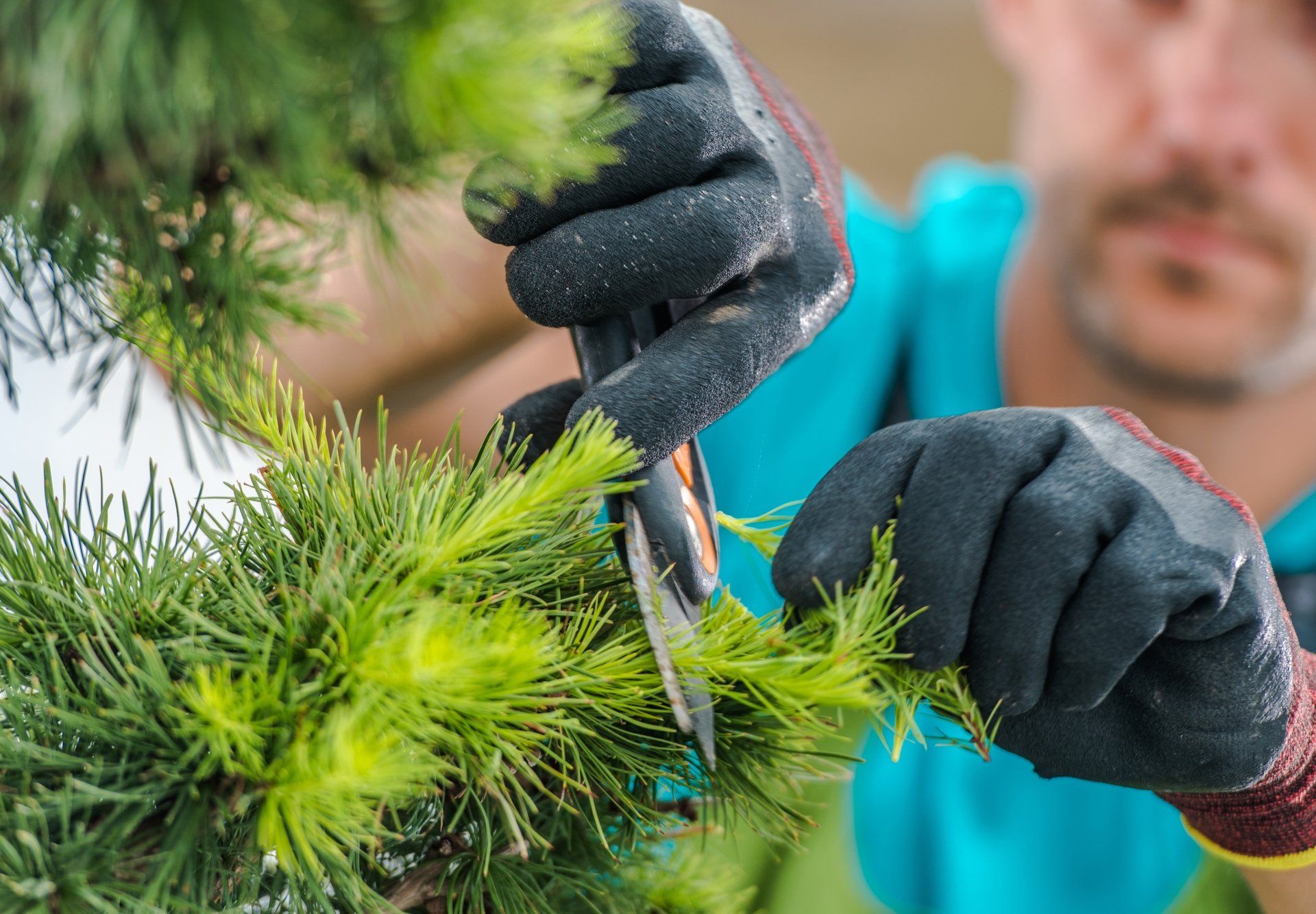Basics of Tree Trimming
It’s easy to think that a tree is healthy when its branches are packed full of leaves and reaching out as far as it can. While partially true, regular tree trimming could prevent your tree from being at risk of receiving poor sustenance due to dense overgrowth.
Overgrowth blocks moisture and sunlight from reaching the parts underneath and prevents the entire tree from receiving vital nutrients.
Thinning out a few overgrown branches helps with a tree’s overall health, and also keeps your family and property safe. Trimming should be done typically once or twice a year.
What is Tree Trimming?
People often confuse the terms tree pruning and trimming thinking they’re the same thing. The truth is they are quite different in the sense that each process has different objectives and produces different results. While both processes involve cutting, that’s as far as the similarities go.
Tree trimming has a lot more to do with the aesthetic and cutting overgrown branches that have an impact on the overall health of your tree and any other plants around it. When tree foliage becomes too dense, it hinders other parts of the plant from getting the moisture and sunlight it needs to flourish.
The overall objective of trimming is healthy tree growth. Cutting off the excess to ensure that a tree doesn’t become too unwieldy and stretch over areas of your house which could pose a danger to your property and your loved ones. Trimming also helps maintain the overall appearance of a tree allowing you to shape it to fit its surroundings by reducing its height and thickness.
Advantages of Regular Tree Trimming
Keeping your tree well-trimmed also keeps a lot of harmful things out of it. Pests and insects can damage a lot of the foliage and weaken the tree. Trees also act as a bridge for them to enter your home and cause an infestation inside.
One such insect known to cause harm is the Tent Worm which is a colonizing insect that builds nests in trees, feeds on the surrounding leaves, and causes diseases to grow and spread that weaken the tree and the surrounding branches.
Regular trimming reduces the potential of dead and diseased branches falling on your property or loved ones. It helps control overgrowth that can potentially damage the exterior walls as overstretched branches can rub against it from harsh winds or even grow underneath the siding and pull away at it.
Trimming your tree isn’t a job recommended for the inexperienced because one wrong snip could cause permanent damage to your tree or worse, kill it. Hiring a professional tree trimming service can safely give your tree the attention it needs and save you time, money, and your tree from a costly mistake.
How to Trim A Tree
Trimming your tree can be done effectively and properly following these easy steps:
- Remove any ‘Prune suckers’ - These are bushy clumps of young stems that form at the base of the trunk that never grow into desirable branches. These little growths actually sap water and nutrients away from the main tree, hence the name.
- Cut off dead or dying branches to allow yourself to see what you’re working with and help make the rest of the job much easier. To know if a branch is dead or dying, check for signs of drying out or brittleness.
- Identify and cut off branches that are low-hanging, in surface contact with your home, or at risk of causing some kind of hazard. You want to either raise the height of the canopy or get rid of obstructive branches by trimming small branches instead of removing a whole limb.
- Remove damaged and weak branches even if they’re healthy. These pose a risk to your property and loved ones. It also attracts pests, insects, and disease, and can also be a place where water settles.
- With a lot of the excess chopped away, all that’s left to do is to trim any intersecting branches and branches rubbing against each other. The more branches rub against each other, the more damaged they become. It’s best to remove both branches if they are both damaged. Otherwise, cut the smaller or damaged one of the two.
Tree Trimming: Things to Keep in Mind
Even when trees are strong and healthy, they’re also delicate, especially if the wrong steps are taken to maintain its health. Here is a list of things to avoid and keep in mind while trimming your tree:
- Avoid trimming during its dormant period or when flowers start to fade.
- Aimless trimming could damage your tree and can be difficult to fix.
- Avoid trimming near utility lines or after a storm.
- Use the right tools for the job. Tools for trimming are different than the ones used for pruning.
- Avoid trimming a tree that requires a chainsaw and ladder work. In these cases, it’s best to hire a tree service and leave it to professionals.


